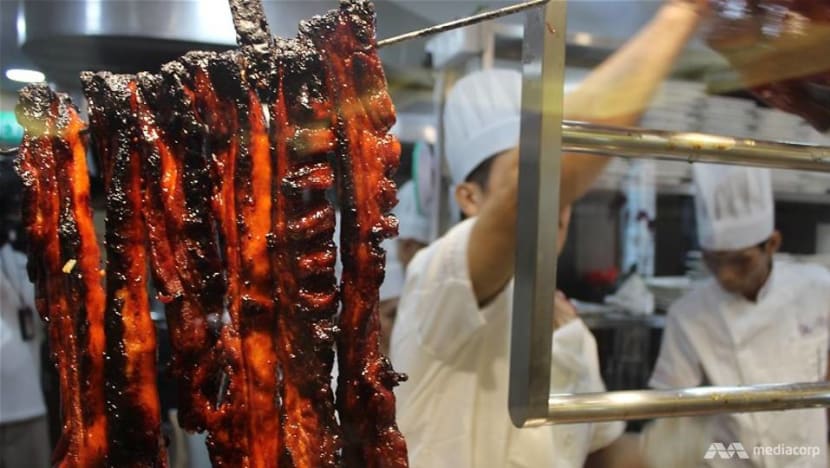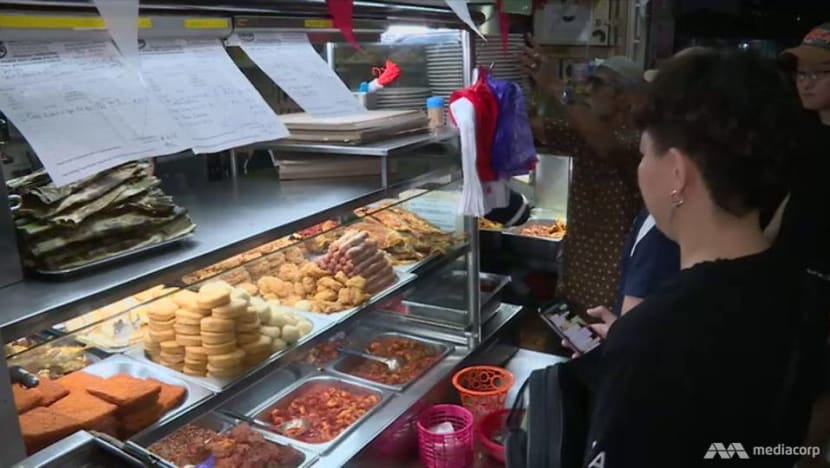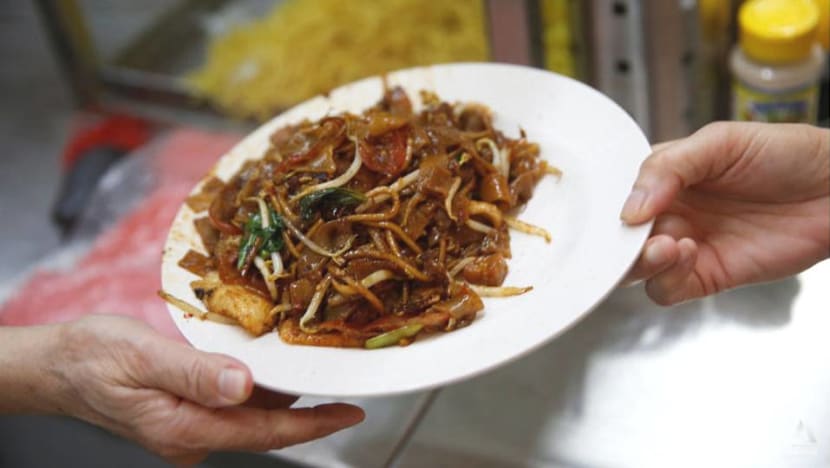commentary Commentary
Commentary: UNESCO listing may lift hawker culture but saving it is a different challenge
The bid to list Singapore hawkers may help preserve hawker culture as a distinctive expression of Singapore’s customs but continued efforts are needed to boost the hawker scene, says one observer.

Char siew sold at Hawker Chan..
SINGAPORE: What do traditional Mexican cuisine, Croatian gingerbread-making and Korean traditional kimchi-making have in common?
If you guessed they’re the topics of expensive, popular cook books, I’m sure you’re probably right.
But these three are items inscribed into the UNESCO Intangible Cultural Heritage List.
UNESCO, also known as the United Nations Educational Scientific and Cultural Organisation, is responsible for the World Heritage List, to which the Singapore Botanic Gardens was added in 2015, recognising natural and cultural sites of outstanding and universal value.
Less well-known is the Representative List of the Intangible Cultural Heritage of Humanity, comprising cultural practices and intangible elements which demonstrate the diversity of a place’s heritage. Nominations are put forward by states party to the 2003 Convention and decided on by a committee.
There has been strong citizen support for Singapore’s hawker culture bid for inclusion into the list, which Prime Minister Lee Hsien Loong announced was to be proposed in his National Day Rally speech last week.
FOOD, AN EXPRESSION OF A COUNTRY, A PEOPLE
Food serves purposes besides physical sustenance, having a socio-cultural significance. Culinary customs vary widely worldwide and food can be a marker of identity, helping to define a country and culture. Local and ethnic foods too are seen as an expression of a place and people.
Food is central to identity at an ethnic and national level and has its own heritage, even though defining a national cuisine and determining ownership of national dishes are complicated by the myriad flavours and influences.
Hawker fare in particular represents Singapore’s multiracial and cosmopolitan population, and has a relatively long history. It is a source of affordable food, on which many rely, and hawker centres are democratic and inclusive spaces shared by people of all backgrounds.
Hawkers have clearly made a major contribution to Singapore’s food culture in the past and the integral part they play in current everyday life makes them highly appropriate as a nomination. The fact that they are found elsewhere in Asia and beyond, albeit differing by locality, does not invalidate the UNESCO submission.

CONCERNS ABOUT HOMOGENISATION
Indeed, there may be disagreement about what exactly constitutes these categories of food worth preserving in the UNESCO list, but they are often perceived to be at risk from multinational production and food service companies.
The activities of these businesses generate fears about homogenisation and the imposition of foreign tastes alongside damage to domestic enterprises.
Concerns have prompted endeavours globally to celebrate and conserve indigenous cuisines, although the local and global can co-exist. Globalisation has been shown to strengthen the desire to protect locally distinctive food cultures and the two interact in an ongoing process which is potentially constructive.
The UNESCO list itself makes fascinating reading and confirms the many forms taken by intangible cultural heritage, much of which is under threat in the modern era.
Hence attempts at formal recognition and guardianship so that the world’s rich cultural heritage is available for the appreciation of future generations in a home state and more widely.
These ideas resonate in Singapore where analysis of eating and dining habits sheds light on the history of the country, its geography and contemporary society as well as political and economic systems.

READ: Our hawkers deserve more, a commentary
SUSTAINING THE TRADE
Growing popular and official awareness of the hawker centre’s vital role in Singapore are reflected in initiatives to sustain the trade, but there are uncertainties about what lies ahead. A successful listing might assist the campaign to ensure that hawkers have a future in light of acknowledged problems.
Skills are being lost as older practitioners retire without passing on their expertise and younger Singaporeans tend to shun the job, deterred by the working conditions and remuneration.
At the same time, there are grounds for optimism and young cooks are entering the sector in what the late Anthony Bourdain described as a “hip hawker” movement. Dining environments are also being updated with hawker centres designed to meet 21st century demands.
Admission into the list would underline the significance of hawkers and enhance their status, perhaps encouraging more to consider it as a career.
READ: Healthier options ‘killing the hawker vibe’? Why so resistant, Singaporeans? A commentary
READ: Why are we willing to pay S$20 for a bowl of ramen but not bak chor mee? A commentary
VALUE TO TOURISM
There are also implications for tourism given that food is a tourist attraction and a theme in tourism promotion. Eating out is an entertainment for visitors, affording insights into a society’s culture and way of life.
Food can be a primary motivation where gastronomy and culinary tourism cover a spectrum of engagement from serious to the more casual. Whatever their position, many tourists are looking for authentic experiences and hawker centre food meets this need.
Singapore already has a reputation for street food, indicated by the featuring of hawker stalls in the Michelin Guide, but UNESCO listing might boost interest among outsiders and would be useful in Singapore Tourism Board’s marketing.

The attitudes of some visitors, however, may be unaffected. The Intangible Cultural Heritage of Humanity is not as well publicised as the World Heritage List, selection for which can be a major stimulus for tourism development at destinations in a way exemplified by the Angor Wat in Cambodia.
NOT ENOUGH TO SAVE HAWKER CULTURE
The plan to propose hawker culture for UNESCO inscription is to be welcomed, yet clearly will not be enough to guarantee its continuation and other efforts should be maintained.
It should also be noted that food cultures, encompassing hawkers, constantly evolve as production and consumption patterns respond to internal and external factors. While they are a type of cultural heritage and part of a living tradition, hawkers cannot and should not be trapped by the past.
Modern hawkers must be allowed to keep up with the times, including raising prices in line with costs which seems to be a move resisted by patrons. Such increases should be accepted and may indeed be essential if hawking is to remain commercially viable.
In addition, younger practitioners should feel free to experiment and innovate as well as specialise in familiar dishes. New hawker centre models should be explored.
Hawking is not only a representation of intangible cultural heritage, but a vital aspect of contemporary life which is of practical relevance to hawkers and their customers.
Securing a balance between continuity, respecting the historical legacy, and change to meet the requirements of the present and future is a formidable challenge.
Joan Henderson is an Associate Professor at Nanyang Business School and specialises in tourism with a particular interest in heritage.















